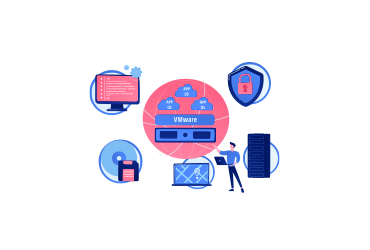
 Jun 26, 2022
Jun 26, 2022
An operating system is a powerful, often comprehensive program that controls and manages the hardware and other software on a computer.
All computers and computer-like devices require operating systems, including a laptop, tablet, desktop, smartphone, smartwatch, and router.
An operating system (OS) is a set of programs that control and supervise a computer's hardware and software.
An operating system provides an interface between a computer and a user, increases computer efficiency by helping users share computer resources and by performing repetitive tasks that would otherwise be performed by users.
There are several types of operating systems available, some of which are single task (performing one task at a time all the way to completion) while others are multitasking (performing more than one task at a time).
Some are text-based or command-line-oriented, as with DOS, while others are icon-based and offer graphical user interfaces such as Microsoft Windows.
In the microcomputer environment, common types of operating systems include DOS, Windows 3.x, Windows 95, Windows 98, Windows NT, Windows 2000, Windows ME, Windows XP, OS/2, Unix, Linux, Macintosh, and Apple OS.
Once a user turns on a computer, the operating system takes over.
The majority of operating systems for small computers, such as MS-DOS, Apple PRODOS, and Apple Macintosh, are single-task operating systems.
However, OS/2, developed by IBM, various versions of Unix and Microsoft Windows operating systems are capable of multitasking, with the ability to perform multiple operations simultaneously. The first table lists some of the popular operating systems on the market.
Oracle allows other methods of authentication located outside the database, the most commonly used being local operating system authentication, which facilitates database connections for users of the database host operating system.
OS authentication has been a part of Oracle since day one, and in fact, this was the only authentication mechanism that was supported in the first versions of the database.
Authenticated access from the operating system to the database is a good thing, especially since most operating systems used to host Oracle databases have strong authentication and password management mechanisms.
Operating system authentication can also pose some serious risks to your system, especially if things aren't configured properly.
It's actually all fairly simple, but some parts are certainly not intuitive.
By understanding how to set up and define operating system authenticated accounts, and how to enable security features around operating system authentication, you can enable and secure operating system authenticated local access to your databases.
Remote OS Authentication
Remote OS authentication is a feature that allows Oracle databases to blindly accept connections from users authenticated by a remote operating system (ie logging into a system that is not the database server).
Remote OS authentication is a significant security risk to any database and should be disabled on all systems, whether production or non-production.